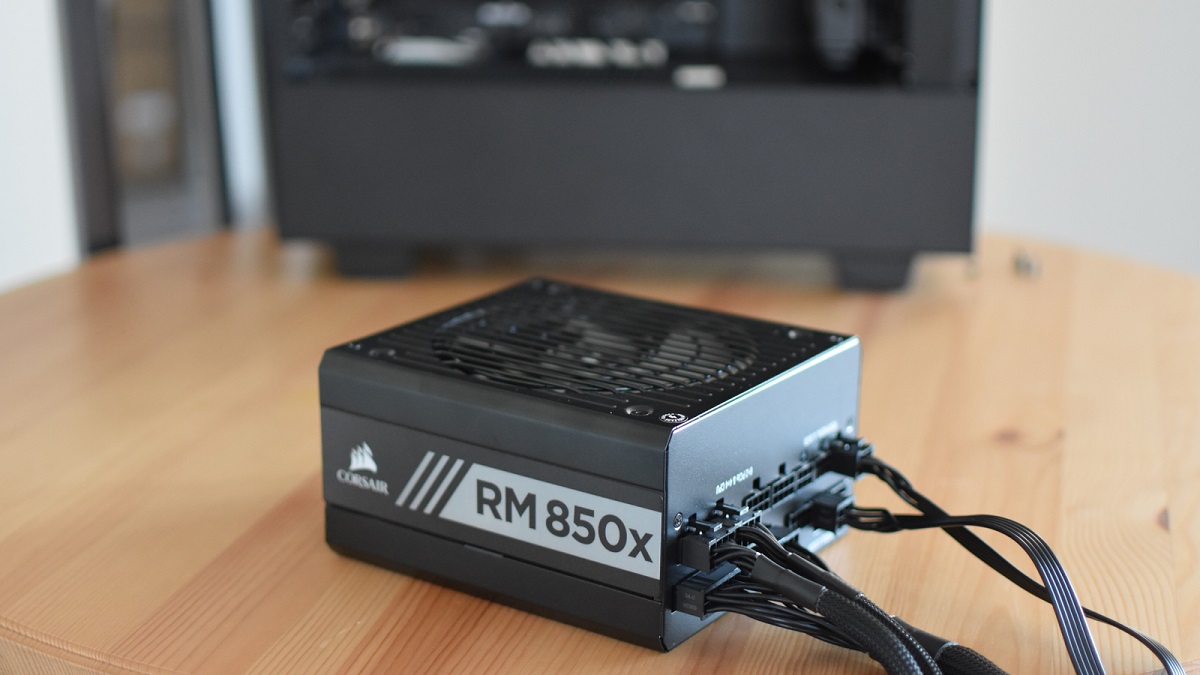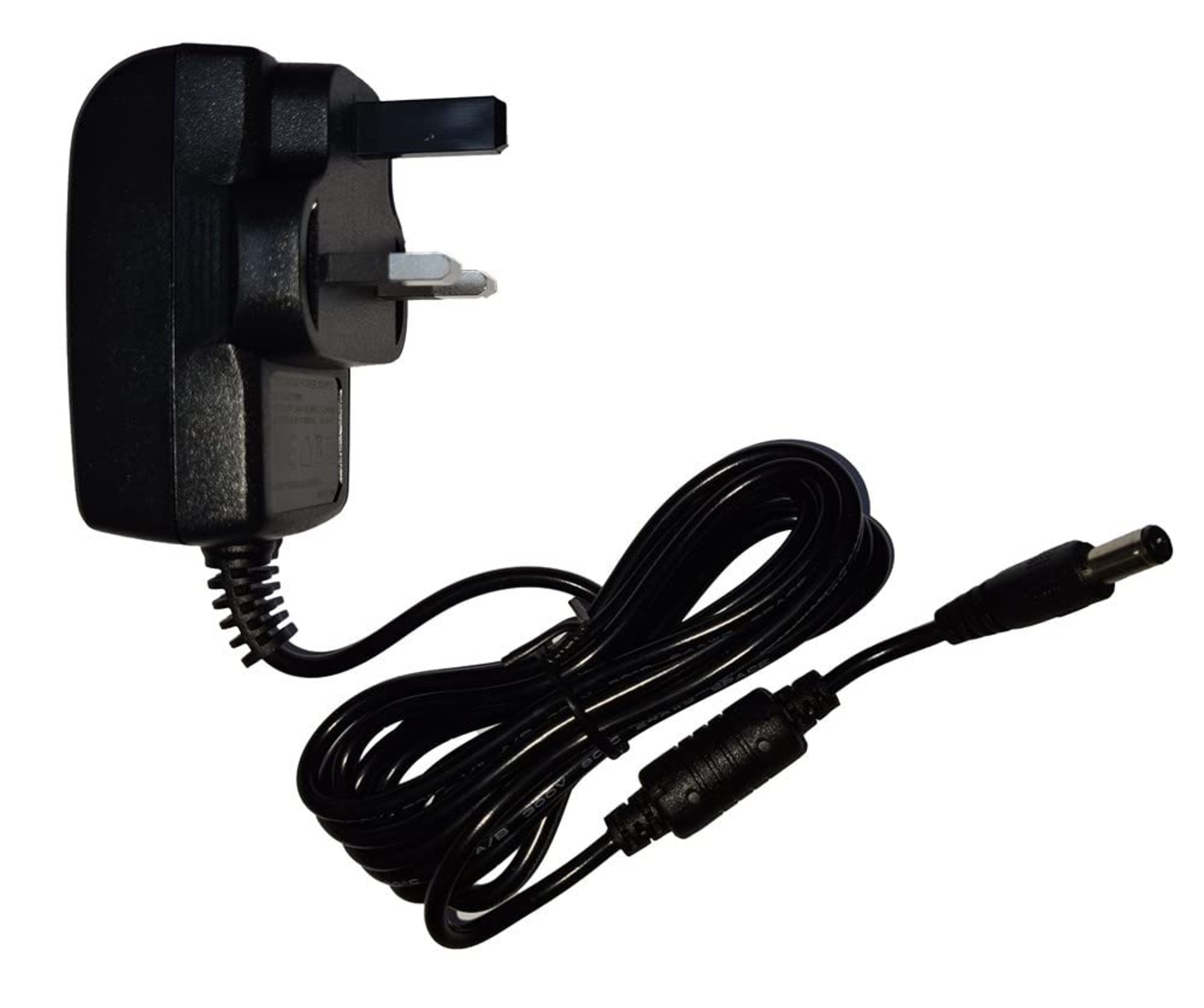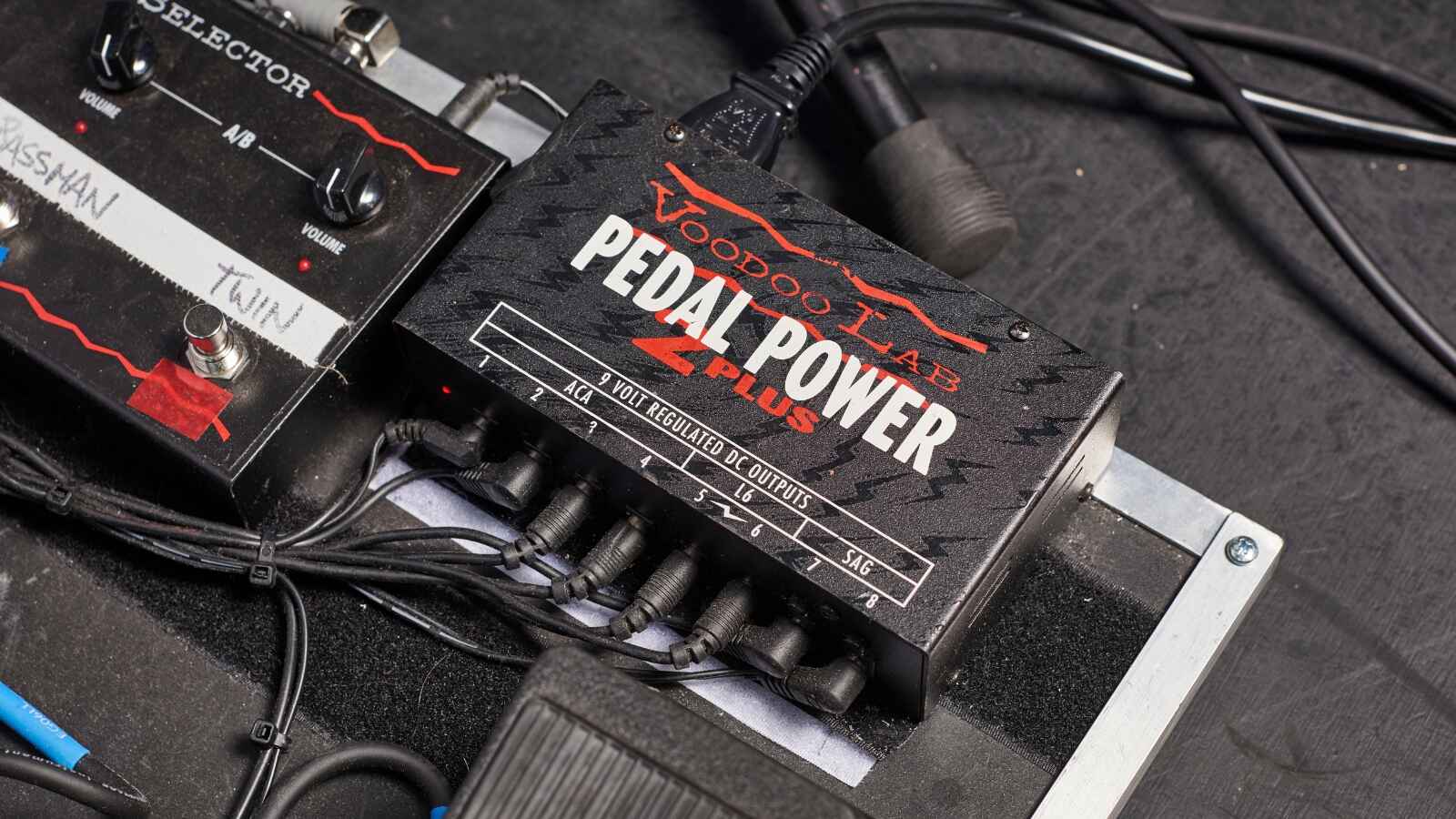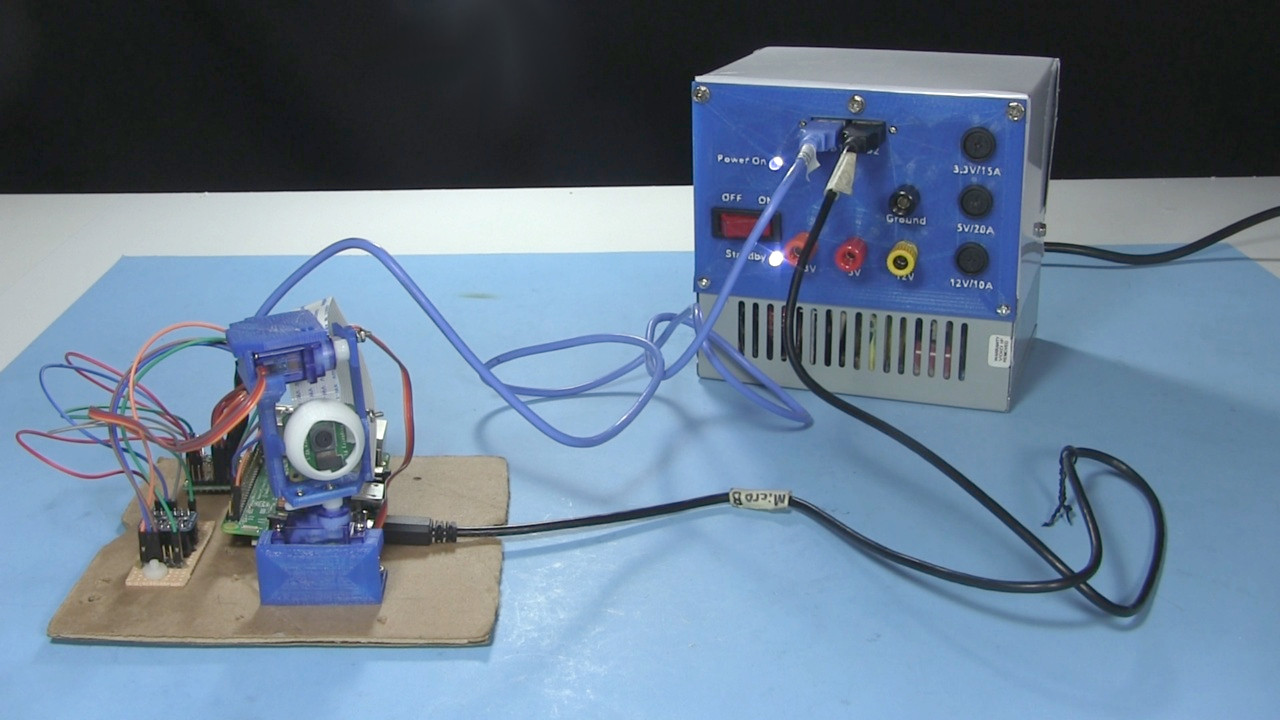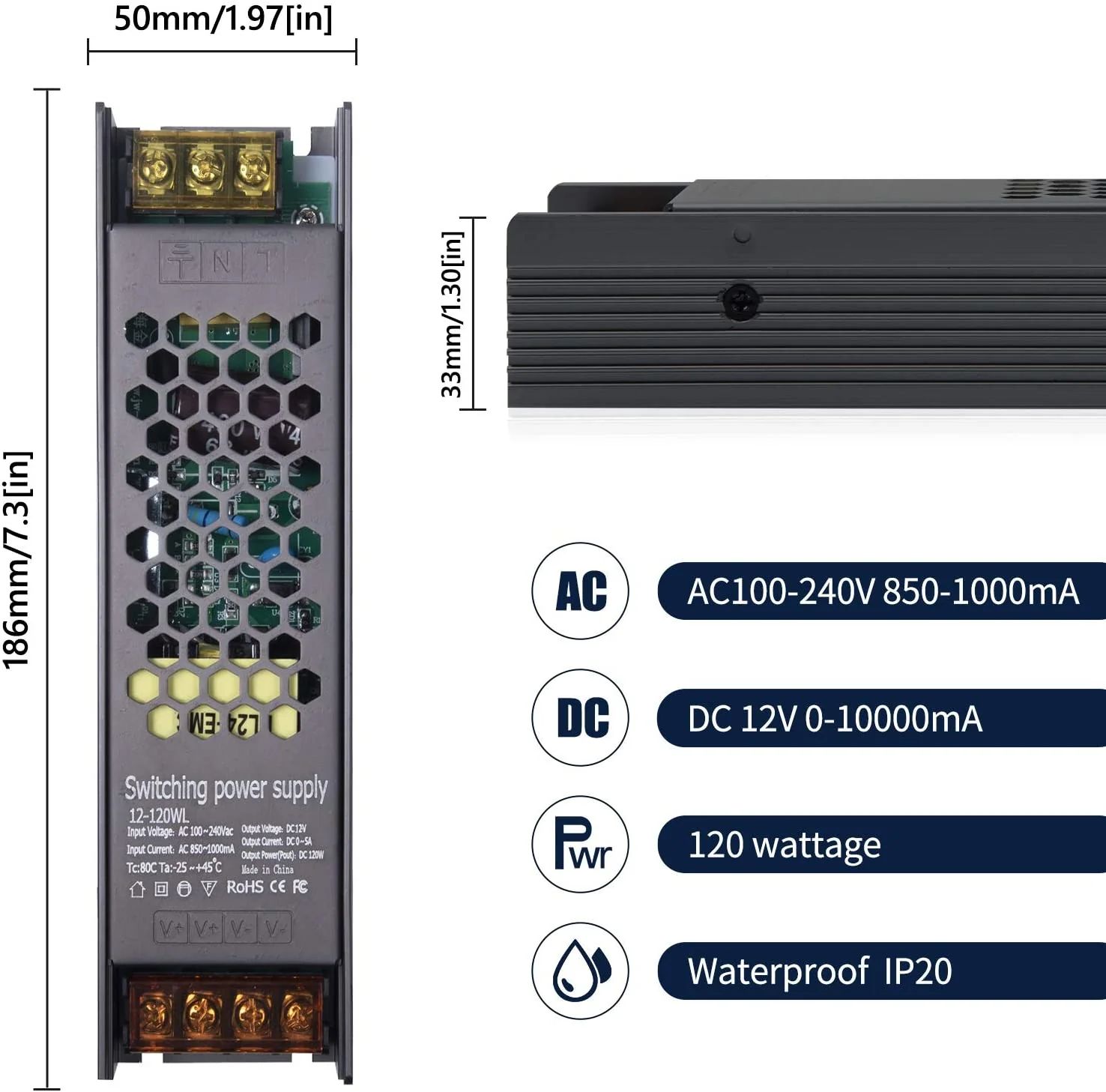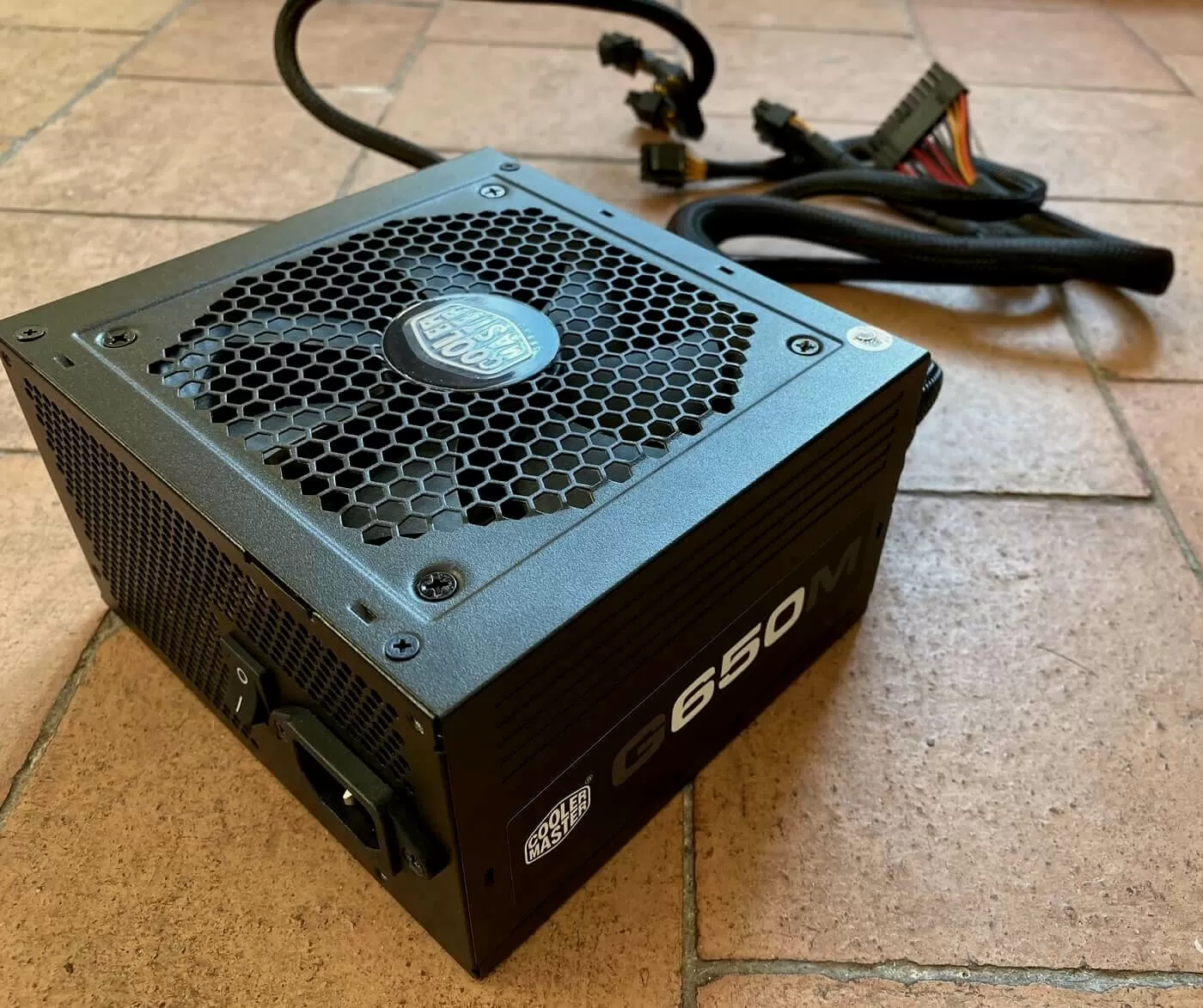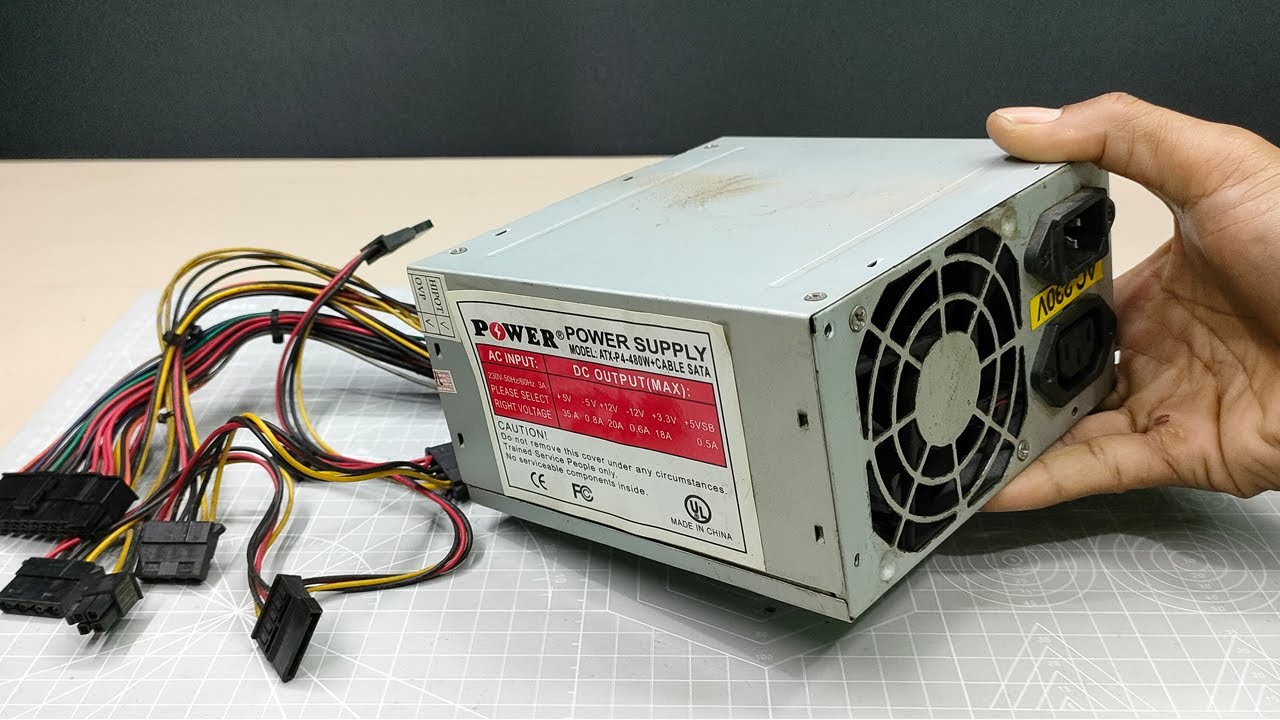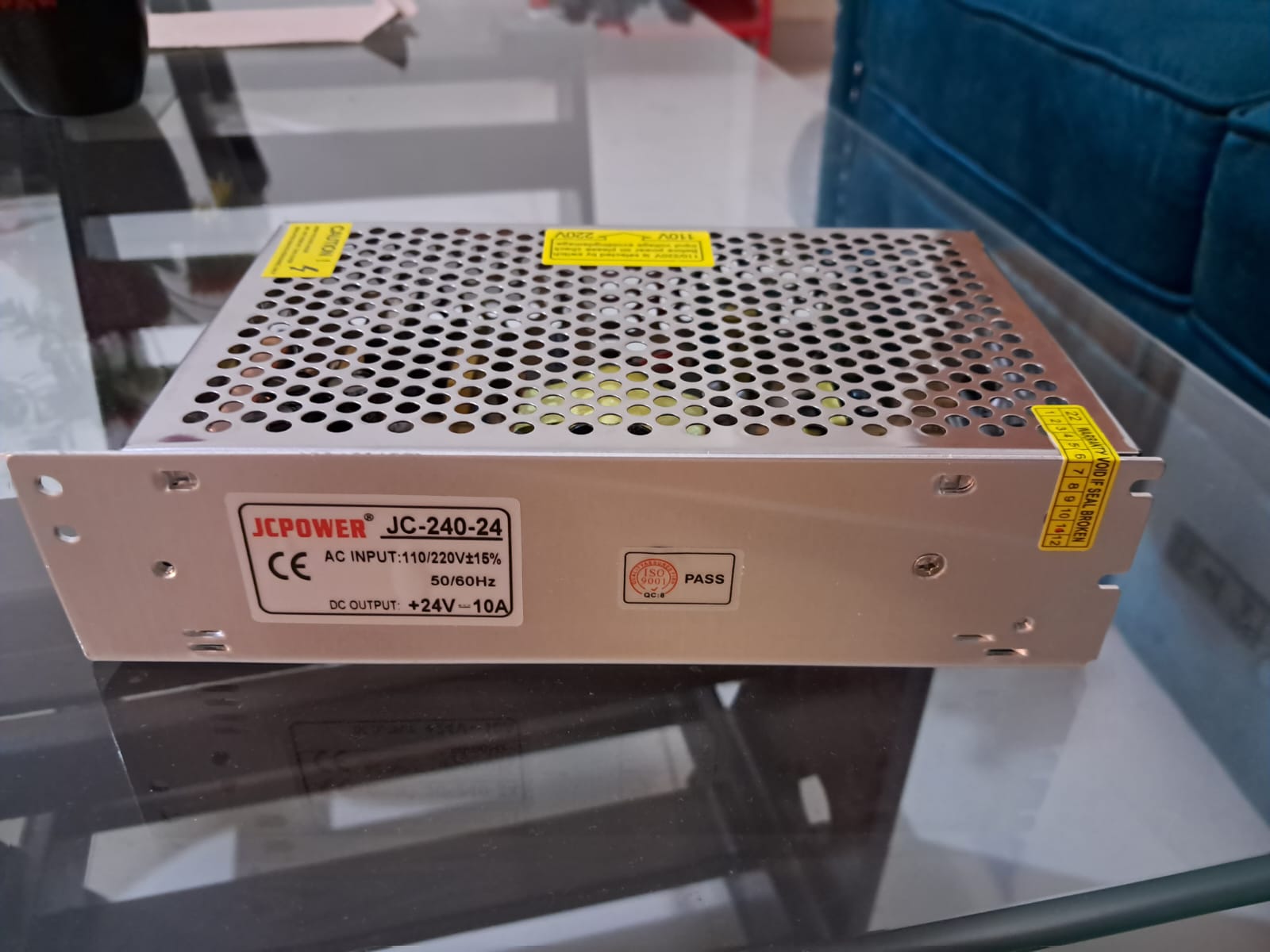Introduction
Welcome to the world of power supplies! If you have ever wondered about the inner workings of a computer or electronic device, chances are you’ve come across the term “DC power” or “DC voltage”. But what exactly is DC power, and why is it crucial in a power supply unit (PSU)? In this article, we will delve into the fascinating realm of DC power and gain a deeper understanding of its significance in the world of electronics.
Direct Current, commonly referred to as DC, is a type of electrical current that flows in a constant direction. Unlike Alternating Current (AC), which periodically changes direction, DC power maintains a consistent flow of electrons, providing a stable and reliable source of energy. DC power is the lifeline of countless electronic devices that we rely on daily, from computers and smartphones to televisions and gaming consoles.
The importance of DC power lies in its compatibility with most electronic circuits and components. Many devices require a specific voltage and polarity to operate correctly, and DC power allows us to deliver the precise level of voltage needed. Furthermore, DC power is essential for electronic devices with specialized circuits, such as microprocessors, which require a steady and controlled flow of electricity to function optimally.
DC power is generated from the conversion of the more commonly available Alternating Current (AC) power, which is supplied by the utility grid or wall outlets. While AC power is efficient for long-distance transmission, it needs to be converted to DC power to ensure safe and reliable operation of electronic devices. This is where the Power Supply Unit (PSU) comes into play, as it serves as the key intermediary between the AC power source and the electronic device, supplying the necessary DC power.
In the following sections, we will explore the process by which a PSU converts AC power into DC power, examine the components involved in generating DC power, and discuss the various types of DC power outputs that a PSU can provide. Additionally, we will touch upon the concept of voltage regulation and the importance of power efficiency in a PSU.
What is DC Power?
DC power, or Direct Current power, refers to the flow of electric charge in a single, constant direction. Unlike Alternating Current (AC) power, which periodically changes direction, DC power maintains a continuous flow of electrons, offering a stable and predictable source of energy.
In a DC circuit, the electrons move from the negative terminal of the power source to the positive terminal, generating a flow of electricity. This unidirectional flow of electrons is crucial for the reliable operation of electronic devices that require a consistent voltage and polarity to function optimally.
One of the key characteristics of DC power is its ability to deliver a steady voltage. With DC power, the voltage remains constant over time, ensuring that devices receive a reliable and consistent level of electrical energy. This is particularly important for sensitive electronics, such as microprocessors and integrated circuits, which depend on a stable power supply to operate accurately and efficiently.
DC power can be obtained from various sources, such as batteries, solar panels, and power supplies. Batteries are an excellent example of a portable DC power source, as they convert chemical energy into electrical energy, providing a constant DC voltage. Solar panels, on the other hand, harness sunlight to generate DC power through the photovoltaic effect – the process by which photons from the sun dislodge electrons in a material, creating an electric current.
Power supplies, especially those used in electronic devices and computers, play a crucial role in converting Alternating Current (AC) power from the mains electricity supply into DC power. The power supply takes the fluctuating AC voltage, typically 120V or 240V, and transforms it into a smooth and steady DC voltage suitable for the components of the electronic device.
Overall, DC power is an essential component in the world of electronics due to its ability to provide a stable and reliable energy source for various devices. Understanding how it is generated and controlled is crucial for ensuring efficient operation and maximizing the lifespan of electronic equipment.
Why Do We Need DC Power in a PSU?
Power Supply Units (PSUs) are integral components in electronic devices and computer systems, responsible for converting Alternating Current (AC) power from a mains electricity supply into Direct Current (DC) power. But why do we need DC power in a PSU? Let’s explore the reasons behind its importance.
1. Compatibility: Many electronic components and circuits within devices, such as microprocessors, require a specific voltage and polarity to operate correctly. DC power provides the necessary compatibility, ensuring the precise level of voltage and direction of flow needed for optimal performance.
2. Stability and Reliability: DC power offers a stable and constant flow of electricity in a single direction, eliminating the fluctuations and irregularities present in AC power. This stability is vital for the reliable operation of electronic devices, allowing them to function without the risk of sudden power surges or voltage fluctuations.
3. Controlled Current Flow: Many electronic components, such as transistors and integrated circuits, require a controlled and regulated current flow to function correctly. DC power allows for precise control over the current, ensuring that the components receive the right amount of electricity to operate optimally and avoid damage.
4. Efficiency: Electronic devices typically operate more efficiently with DC power compared to AC power. AC power conversion in a device can result in energy losses and wasted power. By utilizing DC power directly from the PSU, the device can achieve higher energy efficiency and reduce unnecessary power usage.
5. Protection: DC power can provide built-in protection mechanisms within the PSU. For example, many PSUs have circuitry to detect and regulate voltage levels, preventing the device from receiving power that exceeds its maximum capacity and risking damage or failure.
6. Suitability for Electronic Circuits: DC power is inherently more suitable for electronic circuits and devices. It allows for easier integration of various components and simplifies the design and operation of electronic systems, ensuring compatibility and consistent performance.
Overall, DC power is essential in a PSU due to its compatibility, stability, controlled current flow, efficiency, protection mechanisms, and suitability for electronic circuits. It enables electronic devices to operate reliably, efficiently, and safely, ensuring optimal performance and the longevity of the components.
How Does a PSU Convert AC Power to DC Power?
A Power Supply Unit (PSU) plays a crucial role in converting Alternating Current (AC) power, typically supplied from the electrical grid, into the Direct Current (DC) power required by electronic devices. Let’s take a closer look at the process by which a PSU achieves this conversion.
1. Rectification: The first step in the conversion process is rectification, where the AC power is converted into a pulsating DC voltage. This is achieved using diodes, electronic components that allow current to flow in only one direction. A rectifier circuit consisting of diodes is used to “rectify” or convert the alternating voltage into a pulsating DC voltage, with the negative half-cycles inverted to match the positive half-cycles.
2. Filtering: The pulsating DC voltage generated by rectification contains ripple or fluctuations. To smooth out these fluctuations and produce a more constant DC voltage, filtering is employed. Capacitors are utilized to store and discharge electrical energy, effectively reducing the ripple and providing a cleaner DC output. The larger the capacitance of the capacitor, the better the filtering effect and the smoother the output voltage.
3. Voltage Regulation: After filtering, the PSU incorporates voltage regulation circuitry to ensure the output DC voltage is stable and remains within the desired range. This is particularly essential as electronic devices operate most efficiently when supplied with a consistent voltage. Voltage regulation can be achieved using various techniques, such as feedback control circuits and voltage regulation integrated circuits (ICs).
4. Transformer: In some PSUs, especially those designed for computers, a transformer is used to step down the input AC voltage to a lower level before rectification. This step-down transformer reduces the high AC voltage from the mains power supply to a safer and more appropriate voltage level, such as 12V or 24V. It also helps isolate the electronic device from the potentially hazardous mains voltage, ensuring safety.
5. Additional Circuitry: Depending on the specific design and functionality of the PSU, additional circuitry may be incorporated to enhance performance and protection. This includes features like overvoltage protection, overcurrent protection, and short circuit protection. These protective mechanisms safeguard both the PSU and the connected electronic devices from potential damage caused by fluctuations or faults in the electrical supply.
By performing the steps of rectification, filtering, voltage regulation, and potentially utilizing a transformer and additional protective circuitry, a PSU successfully converts AC power into stable and regulated DC power. This enables electronic devices to receive the necessary energy in the form of consistent and suitable DC voltage, ensuring their proper operation and longevity.
Components of a PSU That Generate DC Power
A Power Supply Unit (PSU) contains various components that work together to generate the necessary Direct Current (DC) power required by electronic devices. Let’s explore the key components responsible for generating DC power in a PSU:
1. Transformers: Transformers play a vital role in a PSU by stepping down the input Alternating Current (AC) voltage from the mains power supply to a lower level. They consist of primary and secondary windings that are in close proximity but electrically isolated. The primary winding is connected to the high-voltage AC source, while the secondary winding provides a lower voltage output suitable for electronic devices.
2. Rectifiers: Rectifiers are electronic components, often in the form of diodes or a bridge rectifier assembly, used to convert the AC voltage into pulsating DC voltage. The rectification process allows current to flow in only one direction, ensuring that the output of the PSU is DC. Rectifiers are responsible for converting the back-and-forth voltage of AC power into a unidirectional flow of electrons.
3. Filtering Capacitors: Filter capacitors are used to smooth out the pulsating DC voltage produced by the rectifiers. They store electrical energy during high voltage periods and release it during low voltage periods, minimizing the ripple or fluctuations in the output voltage. The larger the capacitance of the capacitors, the better the filtering effect, resulting in a more stable DC output.
4. Voltage Regulator: A voltage regulator is a critical component that ensures the output DC voltage remains constant and within the desired range, irrespective of any fluctuations in the input voltage or variations in load. These regulators can be linear or switching types and use various control methods to maintain the desired voltage output, such as feedback loops, integrated circuits, or pulse-width modulation (PWM) techniques.
5. Protection Circuitry: PSU designs incorporate protection circuitry to safeguard both the PSU and connected electronic devices. This includes features such as overvoltage protection (OVP), which prevents the output voltage from exceeding safe limits, overcurrent protection (OCP), which limits excessive current flow, and short circuit protection, which shuts off the output in case of a short circuit. These protective measures ensure the longevity and reliability of the power supply and protect the connected devices.
6. Fans and Heat Sinks: Some PSUs also include fans and heat sinks to regulate temperature and dissipate heat generated by the power supply components. Heat sinks are designed to absorb and transfer heat away from critical components, while fans facilitate airflow, ensuring proper cooling, and preventing overheating.
By combining transformers, rectifiers, filtering capacitors, voltage regulators, and protection circuitry, a PSU can confidently generate the required DC power for electronic devices. These components work synergistically to ensure a reliable, stable, and safe power supply, meeting the demands of modern electronic systems.
Voltage Regulation in a PSU
Voltage regulation is a crucial aspect of a Power Supply Unit (PSU) that ensures the output voltage remains stable and within the desired range, regardless of changes in the input voltage or variations in the load. Let’s delve into the intricacies of voltage regulation in a PSU and its significance in ensuring the proper operation of electronic devices.
1. Importance of Voltage Stability: Electronic devices operate most efficiently and reliably when supplied with a consistent voltage. Voltage fluctuations or deviations from the desired level can adversely affect the performance and lifespan of sensitive electronic components. Voltage regulation in a PSU is vital to maintain a stable power supply, preventing potential damage to connected devices due to overvoltage or undervoltage scenarios.
2. Voltage Regulation Methods: PSUs employ various methods to achieve voltage regulation. One common approach is the use of linear voltage regulators. Linear regulators adjust the output voltage by dissipating excess energy as heat, maintaining a constant voltage across the load. Another method is the utilization of switching regulators, which efficiently regulate the output voltage by rapidly switching the input voltage on and off and using energy storage components like inductors and capacitors.
3. Feedback Control Loops: Voltage regulation in PSUs often involves feedback control loops. These loops continuously monitor the output voltage and compare it to a reference voltage. If the output voltage deviates from the reference value, the control circuit adjusts the PSU’s internal parameters, such as the switching frequency or duty cycle, to bring the output voltage back to the desired level. This feedback control mechanism helps maintain a steady output voltage, compensating for fluctuations in the input voltage or load characteristics.
4. Voltage Regulation Integrated Circuits (ICs): In modern PSUs, voltage regulation is often implemented using dedicated Voltage Regulation ICs (VRICs). These ICs integrate control circuits, feedback loops, and other necessary components into a single chip, simplifying the design and improving the accuracy of voltage regulation. VRICs offer advanced features such as protection mechanisms, remote sensing, and adjustable voltage settings, enhancing the overall performance and reliability of the PSU.
5. Load Regulation: Load regulation is a crucial aspect of voltage regulation in a PSU. It refers to the PSU’s ability to maintain a stable output voltage under varying load conditions. Good load regulation ensures that the voltage remains steady regardless of changes in the connected devices’ power requirements. This is particularly important to prevent voltage fluctuations that can impact the operation of sensitive electronic components.
6. Voltage Ripple and Noise: Alongside voltage regulation, PSUs also strive to minimize voltage ripple and noise. Voltage ripple refers to small fluctuations or oscillations in the DC voltage output caused by factors such as rectification and filtering. Noise, on the other hand, represents unwanted electrical signals that may be introduced during the PSU’s conversion processes. Minimizing voltage ripple and noise is crucial to ensure a clean and stable power supply, promoting proper device operation and reducing the potential for interference.
By implementing voltage regulation techniques, feedback control loops, and advanced voltage regulation ICs, PSUs are capable of delivering stable and regulated DC power to electronic devices. Voltage regulation safeguards the connected devices from voltage fluctuations, enhances their performance and longevity, and ensures a reliable and consistent power supply in various applications.
Types of DC Power Outputs in a PSU
A Power Supply Unit (PSU) typically offers various types of Direct Current (DC) power outputs to accommodate the diverse requirements of electronic devices. Let’s explore some of the common types of DC power outputs found in PSUs and their applications.
1. Single Rail: Single rail PSUs provide a single DC power output with a fixed voltage. These are commonly used in simpler electronic devices or systems that only require a single voltage, such as basic computer systems, audio equipment, or small appliances. The single rail PSU simplifies the power supply design and offers a more straightforward installation process.
2. Multiple Rails: Some PSUs feature multiple DC power outputs, each with its own voltage. These are called multi-rail PSUs and are often used in more complex systems that require different voltage levels for various components. For instance, computer systems with high-end graphics cards and processors may utilize multi-rail PSUs to provide separate power outputs for the CPU, GPU, and other components, ensuring stability and avoiding power bottlenecks.
3. Main and Auxiliary Rails: Some PSUs provide both a main rail and auxiliary rails. The main rail supplies the primary power to the system, while the auxiliary rails offer lower voltages for peripheral components such as fans, hard drives, lighting, and other accessories. This arrangement allows for efficient power distribution across the system and supports the diverse power requirements of various components.
4. Modular PSU: Modular PSUs provide flexibility in terms of power output customization. These PSUs allow users to detach and connect specific cables as needed, enabling them to select and use only the necessary DC power outputs. This eliminates cable clutter and improves airflow within the system. Modular PSUs are commonly used in computer systems where specific power requirements can vary based on the components being utilized.
5. Adjustable Outputs: Some PSUs offer adjustable DC power outputs, allowing users to modify the voltage level within a specified range. This flexibility is particularly useful when fine-tuning power settings for specific components or when working with systems that have specialized requirements. Adjustable output PSUs are commonly utilized in applications such as testing and development environments, where precise voltage control is necessary.
6. High Current Outputs: Certain PSUs cater to devices or systems that demand high current draws. These PSUs offer DC power outputs with higher current ratings to meet the increased power demands of components like power-hungry graphics cards or high-performance servers. The high current outputs ensure stable power delivery, preventing issues like voltage drops and overheating due to insufficient power supply.
It’s important to select a PSU with DC power outputs that meet the specific requirements of the electronic devices or systems. Understanding the types of DC power outputs and their applications allows for informed decisions when choosing a PSU, ensuring proper power delivery and compatibility with the connected components.
Understanding Power Efficiency in a PSU
Power efficiency is a vital consideration when selecting a Power Supply Unit (PSU) for electronic devices or computer systems. It refers to the PSU’s ability to convert the incoming Alternating Current (AC) power into usable Direct Current (DC) power while minimizing energy losses. Let’s explore the concept of power efficiency in a PSU and its significance.
1. Efficiency Rating: PSU efficiency is usually expressed as a percentage and is commonly referred to as the efficiency rating. It represents the proportion of input power that is effectively converted into usable DC power, with the remaining percentage being dissipated as heat or lost in the conversion process. For instance, a PSU with a 90% efficiency rating means that 90% of the input power is transformed into usable DC power, while the remaining 10% is lost as heat.
2. Reduced Energy Consumption: Opting for a PSU with higher efficiency can result in reduced energy consumption and lower electricity bills. When a PSU operates with higher efficiency, it minimizes the amount of power wasted as heat, leading to less energy drawn from the electrical grid. This is particularly significant for devices that are continuously powered, such as servers or gaming systems, as the energy savings can accumulate over time.
3. Heat Management: Inefficient PSUs tend to generate more heat during the conversion process, which can impact the overall system’s temperature and potentially lead to thermal issues. Conversely, highly efficient PSUs produce less heat, minimizing the strain on cooling systems and improving the overall thermal management of the device. Efficient PSUs contribute to a cooler and more stable operating environment for components, which can enhance their lifespan and performance.
4. Environmentally Friendly: Opting for a PSU with higher efficiency also has environmental benefits. By reducing power consumption and wasting less energy, efficient PSUs contribute to a smaller carbon footprint and help conserve natural resources. Additionally, some PSUs adhere to environmental certifications, such as 80 PLUS certification, which guarantees a certain level of efficiency. Choosing certified PSUs ensures that environmental standards are met and encourages environmentally conscious practices.
5. Consideration of Load: PSU efficiency can vary based on the load placed on the power supply. PSUs tend to have their highest efficiency at specific load levels known as the peak efficiency point. Understanding the load requirements of the system and selecting a PSU that matches that load can help maximize power efficiency and optimize overall performance.
6. Efficiency and Power Capacity: It is important to note that efficiency and power capacity are not directly correlated. While high wattage PSUs may be capable of delivering substantial power, their efficiency may vary depending on the load. It is crucial to choose a PSU that not only meets the power requirements of the system but also delivers high efficiency across a range of loads.
Understanding and considering power efficiency when selecting a PSU is crucial for optimizing energy consumption, managing heat, and promoting environmental sustainability. Choosing a PSU with high efficiency ensures reliable power delivery, reduces operating costs, and contributes to a greener and more energy-efficient system.
Conclusion
Understanding the world of DC power and its significance in a Power Supply Unit (PSU) is crucial for anyone interested in electronic devices and computer systems. DC power, with its stable and unidirectional flow of electric charge, provides the necessary compatibility, stability, and controlled current flow required for optimal operation.
A PSU plays a crucial role in converting the commonly available AC power from the mains electricity supply into the DC power required by electronic devices. The components within a PSU, such as transformers, rectifiers, filtering capacitors, voltage regulators, and protective circuitry, work together to generate stable and regulated DC power.
Voltage regulation is a key aspect of a PSU, ensuring that the output voltage remains constant and within the desired range. By maintaining voltage stability, a PSU enables electronic devices to operate efficiently and reliably, safeguarding them from potential damage caused by voltage fluctuations.
PSUs come in various types and configurations, offering different types of DC power outputs to meet the diverse requirements of electronic devices. Whether it’s a single or multiple rail PSU, adjustable outputs, modular design, or high current outputs, selecting the right PSU ensures appropriate power supply and compatibility with connected devices.
Moreover, considering power efficiency when choosing a PSU is essential. Highly efficient PSUs minimize energy losses, reduce power consumption, improve heat management, and contribute to environmental sustainability. Utilizing PSUs with higher efficiency helps achieve cost savings, maintain system stability, and minimize the environmental impact.
In conclusion, the understanding of DC power, voltage regulation, types of DC power outputs, and power efficiency in a PSU is fundamental in ensuring optimal performance, reliability, and longevity of electronic devices. By delving into these concepts, individuals can make informed decisions when selecting PSUs and contribute to the efficient and sustainable operation of their electronic systems.







